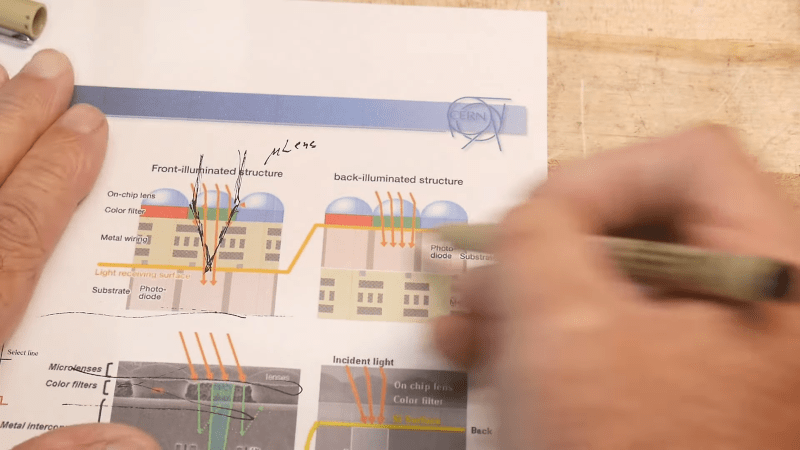The February 1975 issue of Popular Electronics had what was — at the time — an amazing project. The Cyclops, a digital camera with a 32 by 32 pixel resolution with 4 bits per pixel. It was hard to imagine then that we would now all carry around high-resolution color cameras that were also phones, network terminals, and so many other things. But how much do you know about how those cameras really work? If you want to know more, check out [IMSAI Guy’s] recent video on how image sensors work.
The video doesn’t cover any practical projects or circuits, but it has a good explanation of what goes on in modern digital cameras. If you don’t know what digital cameras have in common with an octopus, you might want to watch.
If you want to see what the state of the art in 1975 was, have a look at this post. The image sensor in that camera didn’t have much in common with the ones we use today, but you have to admit it is clever. Of course, 1975 was also the year Kodak developed a digital camera and failed to understand what to do with it. Like the Cyclops, it had little in common with our modern smartphone cameras, but you have to start somewhere.
















Forgive me if some of my brain cells have degenerated over time, but I recall that back in 1977, Fairchild (originally a camera company whose semi division soon overshadowed it) made a “discovery” as the result of testing issues of its dynamic DRAM. Some parts which failed would then pass on retest. This turned out to be due to substrate light sensitivity during die level testing (to save lots of money since bonding and packaging was so expensive). The original windowed DRAM were monochrome of course. I priced one that was touted as being used by NASA. It was a 16K bit DRAM with 128 x 128 array and something like 4 bit useable gray levels. It was “cheap” at $8K for single unit samples. That immediately ended my inquiries into that tech for more than 20 years! But it was still cool that someone was wise enough to see the benefit of chip testing problems.
Back in the late 80’s I removed the window on a DRAM and connected it to a Commodore 64 cartridge port to try and create a vision system